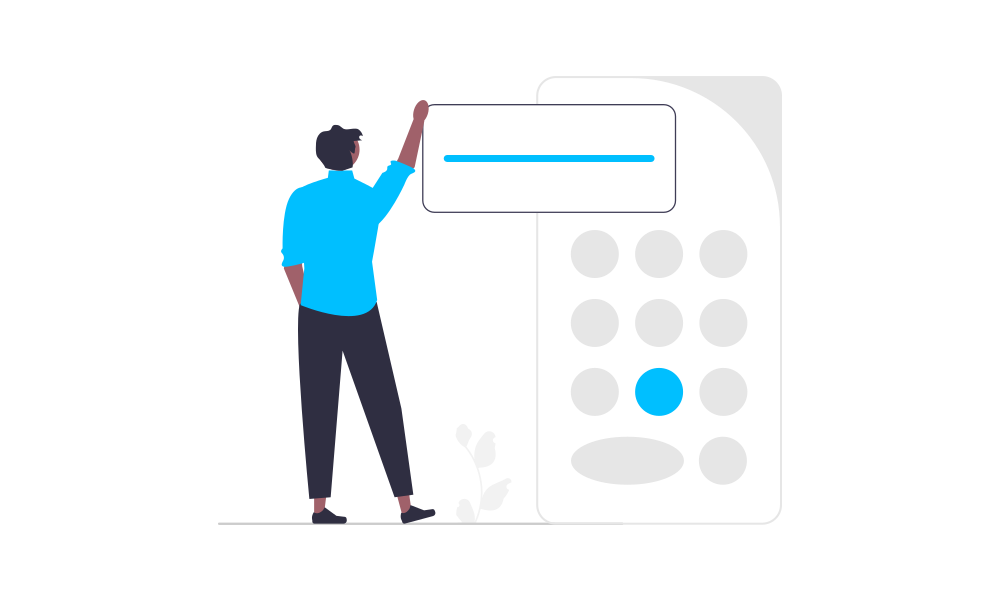How to Demonstrate the ROI of Your New EHS Software
If you’re on the hunt for new EHS software, you’ve probably been busy building a business case to present to senior leadership. After all, you’ll need their buy-in to secure the budget. As we’ve discussed in our recent blog series, leadership is focused on financial metrics. They value, well value! That’s why demonstrating the return on investment (ROI) of your new digital tool is vital.
In theory, ROI is a simple calculation:
ROI (%) = (Total Benefits - Total Cost of Investment)
---------------------------------------
Total Cost of Investment
× 100
But when it comes to EHS software, it can be difficult to demonstrate. Many of the benefits are indirect, so it’s not always easy to put an exact price on them.
This guide will walk you through how to highlight the benefits of your new EHS software, assign a cost to not having any, and make the ROI crystal clear and directly relevant to your business.
How is safety good for business?

Ideally, you’ll make your own ROI calculations, but there are other ways to show senior leaders just how much safety can boost the bottom line. Grab their attention with this fact from OSHA: for every $1 invested in safety, companies save at least $4 to $6 by preventing injuries, illness, lost work, and extra admin tasks. With EHS software, many organizations see payback within the first year.[1]
Then demonstrate the benefits of EHS software, including industry stats to back them up:
Cost savings
- Fewer incidents: You’ll see fewer workplace accidents, which means cutting down on legal fees, medical bills, and lost productivity. In fact, strong EHS management can help you lower injury and illness costs by 20%.[2]
- Lower workers’ comp costs: A safer workplace means fewer workers’ compensation claims, which can keep your insurance premiums stable or even reduce them.
- Better compliance: Staying compliant helps you dodge ever-increasing fines. OSHA upped penalties again in 2024, with serious violations now costing up to $16,131 each.[3]
- Less admin: Automating your EHS tasks can lead to a 15% drop in operational costs.[4]
Productivity improvements
With an EHS management system, you can see a 14% increase in productivity.[5] Automating reporting, auditing, and training makes everything run smoother. Companies have reported:
- 50% more near-miss events reported and resolved
- 61% more corrective and preventive actions tracked and completed
- 80% fewer open or overdue actions
- 80% more actions completed each shift
- 25% faster identification and mitigation of potential risks
- 20% fewer incidents from unidentified risks
Revenue gains
- Better reputation: When you prioritize safety and environmental responsibility you boost your brand’s image among customers, investors, and regulators.
- Greater opportunities: Companies known for strong safety practices are more attractive to clients, partners, and stakeholders, opening doors to new opportunities.
- Loyaler customers: Safe and responsible practices build trust, making it easier to retain your customers.
Operational excellence
- Fewer costly disruptions: In manufacturing, downtime can cost about $260,000 per hour.[6] And, with manufacturers experiencing approximately 800 hours of downtime every year due to maintenance and other issues, the costs add up fast.[7]
- Better decision-making: Real-time safety data gives you the insights you need to make smart, informed decisions that boost performance.
Happier workers
75% of workers say that feeling safe at work is really important to them.[8] So it’s little wonder that when your workplace is safe, you can expect to:
- Boost morale, engagement, and productivity.
- Attract top talent.
- Keep skilled workers, cutting down on turnover costs
Quick guide to calculating the ROI for your new EHS software

The stats above are a good way to get the attention of senior leadership, but as we said, it really helps if you make them directly relevant to your business. So, here’s a step-by-step guide on how to calculate the ROI for your new EHS software:
1. Start with direct savings
Begin by listing the materials, tasks, and people’s time that will be impacted by the new tool. For each, compare the current costs with what they’ll be after you’ve implemented the tool. For example, how long does it currently take to complete a task, and how much quicker will it be with the new system?
Multiply the time saved by the hourly rate of your workers to figure out the savings for each task. Then add these up to get your total direct savings.
2. Don’t forget indirect savings
Next, think about the less obvious benefits. Will the software free up your team to focus on higher-value tasks instead of repetitive admin? Could it reduce downtime by minimizing the risk of injuries?
Estimate the value of these benefits and add them to your total savings. These indirect savings might not be as easy to quantify, but they’re just as important.
3. Calculate your total investment cost
Gather quotes from software vendors and make sure you’re clear on all the costs—licensing, implementation, customization, training, and any new equipment or technology you’ll need. These will be your total investment costs.
4. Calculate your net cost savings
Now, take your direct and indirect savings and subtract the total investment cost. This will give you your net cost savings.
5. Determine your EHS Software ROI
Now it’s time to calculate your ROI using this formula:
ROI = ( Cost savings from step 4 )
-------------------------
( Investment cost from step 3 )
× 100
This will show you the return on every dollar spent.
Keep your calculations simple and relevant, aligning them with your organization’s priorities, and you’ll be all set to secure the budget from senior leaders. When you can clearly show how your new EHS tool saves money and drives value, you’ll make a strong case for why it’s a smart investment. The goal is to show that investing in a digital EHS tool not only cuts costs—it’s about boosting efficiency, improving safety, and enhancing your company’s reputation.
Sign Up for email updates about our latest projects, articles and online events.

Sources
[1] OSHA, Business Case for Safety and Health – Overview
[2] ASSP, The Return on Investment for Safety, Health, and Environmental (OSH) Management Programs
[3] OSHA, OSHA Civil Penalty Amounts Adjusted for 2024
[4] Aberdeen Group, Environment, Health and Safety: Going Beyond Compliance
[5] ASSP, Safety ROI- Return on Investment
[6] Aberdeen Group, Environment, Health and Safety: Going Beyond Compliance
[7] Pingdom, Average Cost of Downtime per Industry
[8] Antea Group, EHS Manager’s Guide: 7 Tactics for a People-First Workplace
